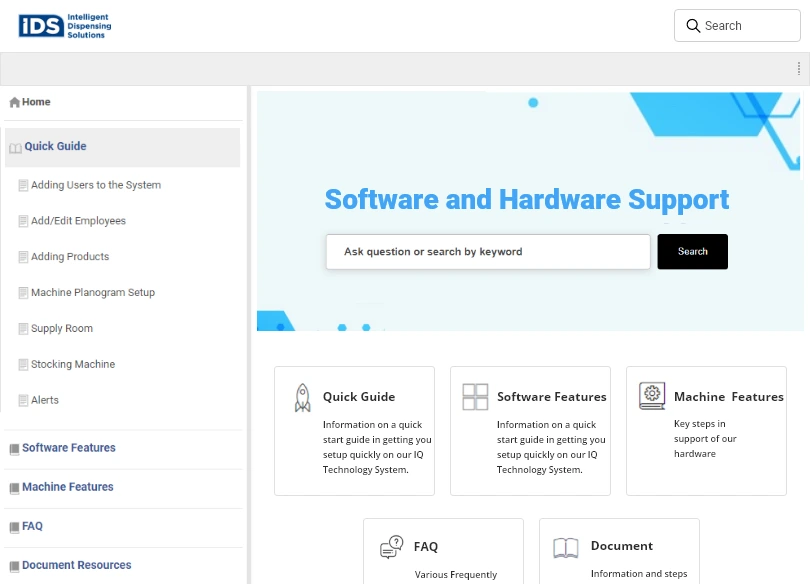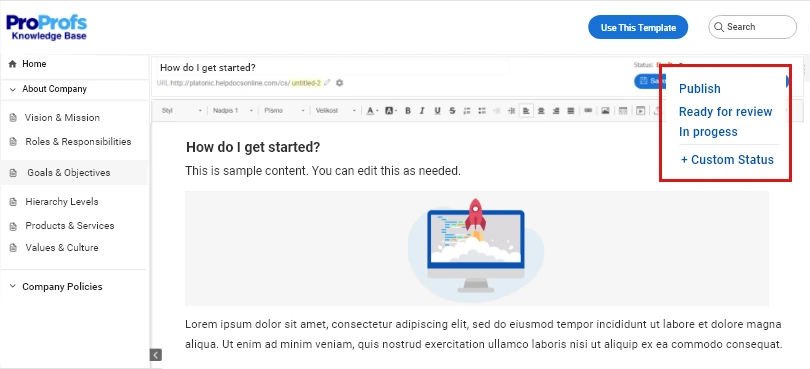Technical writing is an art that is challenging but not impossible to master.
While anyone can build technical documentation that feels fluffy and complicated to read, only an exceptionally skilled technical writer can explain a product in a simplified way that even a layman can easily understand.
In-demand technical writers today are not just good writers. They are product experts, critical thinkers, and impeccable at using analytics to make smart business decisions.
If you are a technical writer looking for ways to level up your skills, you are at the right place!
This blog covers 10 easy and practical technical writing tips that will help you become a successful technical writer.
Let’s go!
Top 10 Tips for Getting Better at Technical Writing
Here are 10 simple tips you can follow to take your technical writing to the next level.
1. Get Into the Heads of Your Target Audience
When you start writing, ask yourself a few basic questions:
Who are you writing for?
What is your audience struggling with?
Is your audience completely new to the product, or are they adept with the basics?
Defining your target audience and getting a grasp of their interests, preferences, and demographics will help you kickstart the journey on the right foot.
For example, if you are writing for internal employees who are familiar with the product’s basics, you can skip the foundational part and rather focus on advanced topics when creating technical documentation.
On the contrary, if your audience is end-users who are new to the product and need to be spoon-fed and guided every step of the way, diving into every nitty-gritty is a good approach to adopt when creating content.
2. Know Your Product in & Out
For effective technical writing, you need to be more than just a good writer.
Technical writing is a field that requires you to have unbeatable expertise on the subject. The clearer your concepts, the better you will be able to put them into words.
And the more knowledge you have about the nitti-gritties and nuances of the tool, the more valuable inputs you would be able to provide in your technical documentation.
If you do not have adequate knowledge about the subject, a good idea would be to do some research and consult with product experts. Gather as much information as you can to ensure you have enough raw material for creating meaningful articles that even a layman can understand.
3. Set up a Strong Structure
What would you prefer as a reader – a document with valuable information all jumbled up across articles or a prim and proper document with information systematically arranged?
Needless to say, a person in his right mind would prefer the latter!
That’s precisely why, as technical writers, besides the quality, you need to give equal attention to the structure of the content. The way technical information is structured can make all the difference between a delighted reader and a disgruntled one.
So the question is – how to get the structure right?
It’s pretty simple!
For starters, there should be a home page giving a bird’s eye view of the key topics covered inside your technical manual. Next, create a table of contents that lists all article categories and subcategories, so readers can easily navigate to the desired page.
The structure should have a logical sequence where the most basic topics are covered first, followed by advanced topics. Such a natural flow will help readers glide through the document, gulping down every ounce of information provided.
Intelligent Dispensing solutions’ documentation keeps its structure on point, as shown in the image below.

4. Make Your Content Easy to Follow
Mastering the art of tech writing requires you to be a pro at one major thing – explaining even the most complicated concepts in a language that is easy to understand.
As a technical writer, you might have a constant urge to use jargon in every other sentence. But that can overcomplicate things, leaving readers all baffled. Instead of solving their problems, you will amplify them even more through your writing.
Simplicity is a key ingredient that can make your technical writing perfect!
But how can you be simple yet effective when it comes to technical writing?
First, think of readers as laymen who do not know a thing about your product. They have no technical knowledge, so you have to be extremely cautious of the language you use when explaining technical terms and concepts. Be more direct in your writing. Use short sentences that convey the point without beating around the bush. Numbered lists and bulleted points are also great for a light-hearted read.
5. Incorporate Visuals to Illustrate Features & Processes
Visuals have the potential to turn a boring document into a brilliant piece that your audience would love to read. They also have the power to make your complex technical content a breeze to read and understand.
According to Forbes, a human brain can process visuals 60,000x faster as compared to written text!
Imagine the impact you can leave on readers by combining both written text and visuals.
It is, in fact, the best way to teach your audience about how to use a feature or carry out a process. They can read as well as visually experience the process through illustrations such as charts, screenshots, and diagrams.
You can also incorporate complimentary videos to help readers make quick sense of everything you’ve written.
6. Step up Your Document’s Formatting & Presentation
Technical content writing is as much about working on the design and presentation of your documentation as it is about the quality of information.
How your technical documentation looks and feels to the audience determines if they would want to continue reading or switch to a different platform.
So, one of the technical writing tips that can positively impact your documentation is leveling-up its appearance by using the right fonts, themes, and designs.
Illegible fonts, colors that are too bright on the eyes, themes that look clumsy – these are design blunders that can deviate your audience from going any further in your documentation.
When working on technical content, ensure that you use appropriate fonts and designs and keep them consistent throughout the document.
If you are working for a company, you can add its name and logo to the document so that your audience can quickly make a connect.
Furthermore, it’s also possible to improve the overall layout and aesthetics of your documentation through CSS. Modern technical writing tools are equipped with CSS, using which you can bring structural changes to your documentation, making it even more attractive and brand-aligned.
Watch this video to enhance your knowledge on how to get better at formatting and designing.
7. Focus on Searchability & Search Engine Optimization
As a technical writer, one skill that can take you ahead of the game is your ability to produce highly searchable, and search engine optimized content.
Searchability and search engine optimization – both these are critical elements that aid scannability and information access.
For your documentation to return accurate results at a lightning-fast pace, it should have a logical structure. Second, relevant keywords and phrases should be tied into the content at the right places.
And third, your technical documentation should have a Google-like search system that can quickly crawl through the articles and serve up accurate results matching readers’ queries.
As far as search engine optimization goes, you don’t have to be a marketing expert to build SEO-friendly content. Even if you’ve got your basics right, you will be well on your way to producing quality content that is worthy of Google’s attention.
For example, you can structure your knowledge base content in a way that it consists of pillar pages and topic clusters that are interlinked together. You can use primary keywords in articles’ titles, meta descriptions, as well as URLs to help Google crawl and index your documentation and show it in the top results in SERP.
8. Ask Feedback & Act on It
“Feedback is the breakfast of champions.” – Klen Blenchard
The way you need breakfast to navigate through the day’s challenges, you also need feedback to perform exceptionally well in a given task.
If you are deeply passionate about technical article writing and want to be a real champion in this field, you will have to embrace readers’ feedback with open arms.
Feedback can be both positive and negative. While positive feedback is a great morale booster, negative feedback exposes you to new perspectives and opinions about the work you do. If taken positively, negative feedback can empower you to elevate your technical writing and achieve transformative results.
So, the obvious question here is, how to collect feedback?
Gamification tools, feedback forms, and surveys are the go-to tools that can help you get quick feedback from people reading your technical documentation.
Forms are usually added at the end of every page, and surveys are embedded mostly on the side of the page for readers to raise tickets for unresolved issues quickly.
Learn more about how to add feedback and survey forms to your technical documentation in this short video.
9. Proofread Before Publishing
The technical writing process is incomplete without proofreading the content created for your manual or documentation.
Missing this step can have serious consequences, the most important one being – readers’ loss of trust and confidence in the information you provide.
Proofreading is not limited to checking your documentation for spelling and grammatical errors. It goes far beyond these basics and covers issues like inconsistencies in structure and formatting, repetitions, and gaps in articles.
If you have a team of technical writers working on a document, proofreading can be a lot more streamlined.
You use a documentation tool like ProProfs Knowledge Base to set a review workflow for each article. This workflow ensures that every article goes through a stringent review process and is approved by editors before they are finally published.
With such a process in place, there will be more transparency and clarity around what’s reviewed, what’s pending, and what has gone live.

10. Leverage Analytics to Identify Areas of Improvement
Good technical writing is achieved by constantly looking for improvement opportunities. For if you don’t improve, your technical documentation will soon die of stagnancy and irrelevance.
The question that pops up here is – how to improve something without measuring its performance?
That’s where analytics come to the picture.
Modern technical writing tools encompass a built-in reporting system that gives a detailed analysis of what’s working and what’s not working in your technical content.
For example, you can unlock insights into your most popular and poor-performing articles, total reads, failed searches, and a lot more. If you have a team of writers, you can even generate reports on author activities and closely monitor their contributions and log-in time.
This wealth of information can be leveraged to gauge how your technical content is performing and which areas need your undivided attention.
Watch this quick video to learn more about how you can analyze reports to improve your technical content’s performance.
Conclusion
Technical writing is a lucrative field but equally challenging.
To be in the top league of technical writers, you need a lot more than just writing skills.
For example, you should have a sense of aesthetics to design an impressive technical document. You also need to be more receptive to feedback and master the art of proofreading. And most importantly, you should have a complete know-how of your audience as well as the product or service you are writing about.
Hopefully, the tips shared above will support you in this journey of becoming a technical writing expert. Start following them right away, be consistent in your efforts, and watch your technical writing career grow by leaps and bounds.
FREE. All Features. FOREVER!
Try our Forever FREE account with all premium features!







